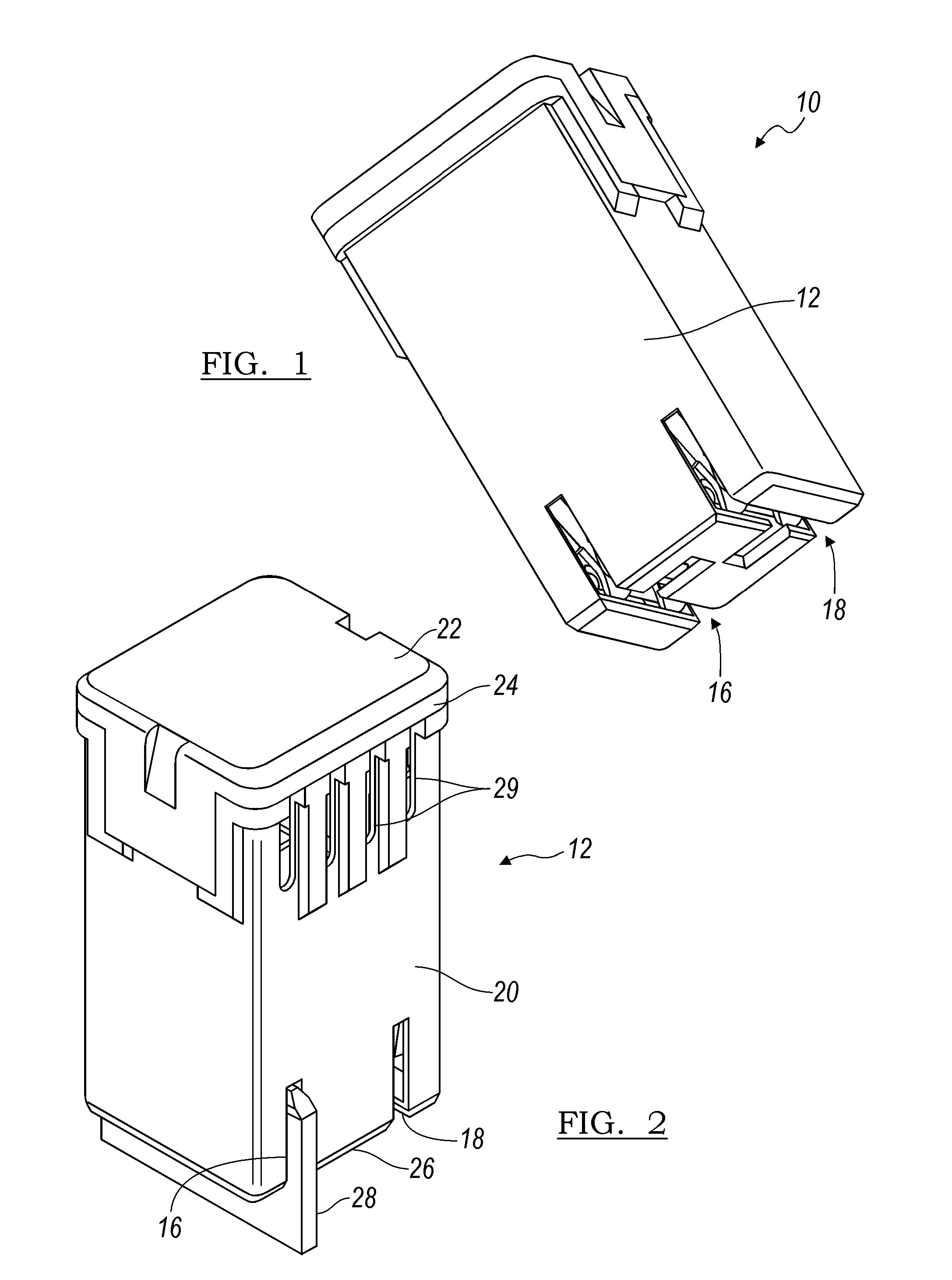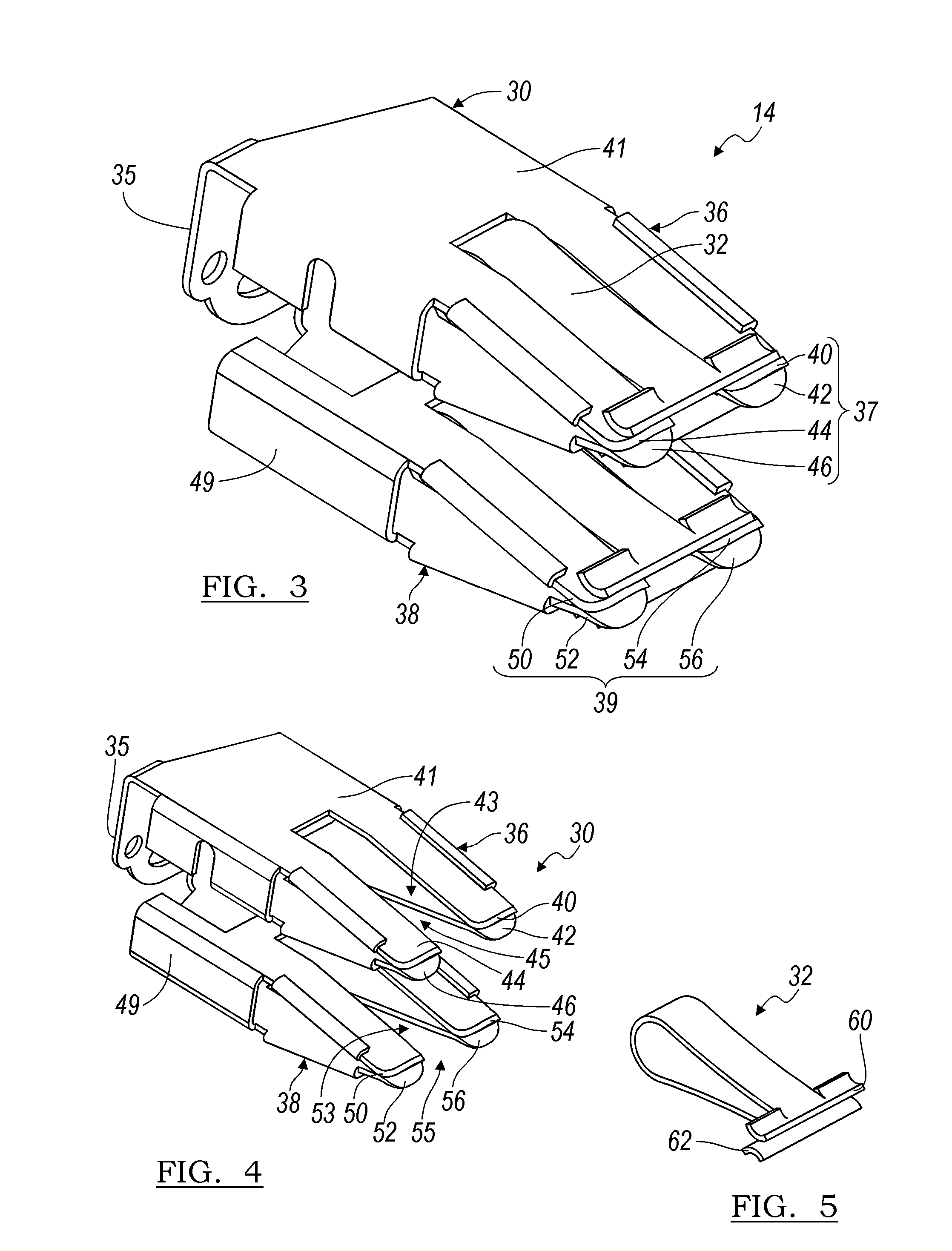High Power Case Fuse
a high-power case, fuse technology, applied in the direction of coupling device connection, coupling contact member, coupling device details, etc., can solve the problems of low conductivity, low conductivity of copper alloys and copper alloys, and high mechanical stress properties, so as to achieve high-power fuse and mechanical stress greater
- Summary
- Abstract
- Description
- Claims
- Application Information
AI Technical Summary
Benefits of technology
Problems solved by technology
Method used
Image
Examples
Embodiment Construction
[0021]Referring now to the drawings, there is illustrated in FIG. 1 a high power fuse shown generally at 10. The high power fuse 10 includes a housing 12 and a fuse assembly 14 disposed within the housing 12. The housing 12 includes a first slot 16 for receiving a first terminal blade (not shown) and a second slot 18 for receiving a second terminal blade (not shown).
[0022]FIG. 2 illustrates a perspective view of the housing 12. The housing 12 is preferably produced from two sections that include a body portion 20 and a lid portion 22. The body portion 20 is an elongated chamber that includes an open end 24 and a closed end 26. The open end 24 is of a sufficient width and length for receiving and housing the fuse assembly 14 (shown in FIG. 3) within the housing 12. The first slot 16 and the second slot 18 are formed in the closed end 26. The slots are aligned with respective receiving members for making an electrical connection with a respective terminal blade (shown generally at 28)...
PUM
 Login to View More
Login to View More Abstract
Description
Claims
Application Information
 Login to View More
Login to View More - R&D
- Intellectual Property
- Life Sciences
- Materials
- Tech Scout
- Unparalleled Data Quality
- Higher Quality Content
- 60% Fewer Hallucinations
Browse by: Latest US Patents, China's latest patents, Technical Efficacy Thesaurus, Application Domain, Technology Topic, Popular Technical Reports.
© 2025 PatSnap. All rights reserved.Legal|Privacy policy|Modern Slavery Act Transparency Statement|Sitemap|About US| Contact US: help@patsnap.com



